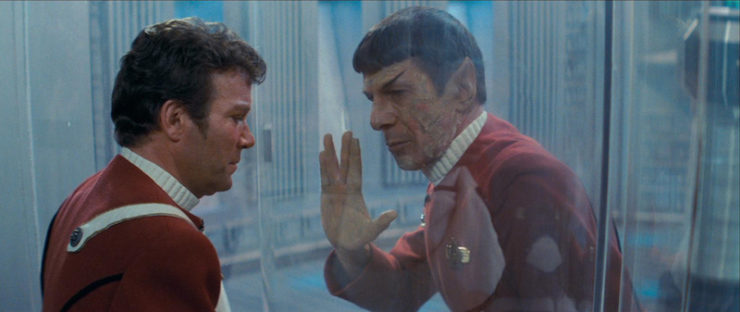Resurrection isn’t just the basis for several long-running religions, it can also make for a game-changing plot point in fiction. After all, death is quite a hard reboot, and sometimes killing a character is exactly the shot in the arm a story needs – especially if it’s a fantasy epic, or a comics series that’s been going on a while. But then there’s the next problem—can you get even more of a jolt by bringing the character back? Will their death mean more if they have to contend with life again? If their grand sacrifice becomes a stand-in for a more explicitly religious event?
Since Easter is just around the corner, we’ve gathered some of our favorite takes on resurrection, and ranked them according to, um, data? Actually we just ranked them according to which ones we thought served their narratives best. Let us know if we missed any of your favorites in the comments!
(Potential spoilers ahead for A Song of Ice and Fire/Game of Thrones, The Lord of the Rings, Star Trek, and other SFF properties)
15. Jon Snow, Game of Thrones

Jon Snow’s resurrection hasn’t happened (yet) in the books, so its occurrence in Game of Thrones was our first real indicator that the show was vaulting confidently past the books, unafraid to alter key elements of the series. In this respect, Jon Snow’s resurrection was awesome, especially since the TV show skipped over A Song of Ice and Fire’s other major undead character: Lady Stoneheart.
But in another sense, this resurrection is annoyingly anti-climactic. Jon dies because he makes the same mistake that Ned did, assuming loyalty and a strong sense of morality where there was none. The mutinous ambush drains any possible tension from that mistake, and his death at the end of season five unravels or nullifies too much of the plot to be convincingly permanent—especially since the red priestess just happened to return to Castle Black at about the same time. The end result for the audience is impatience, and it’s not much of a shock when Jon finally returns to life in season six.
14. Church Creed, Pet Sematary
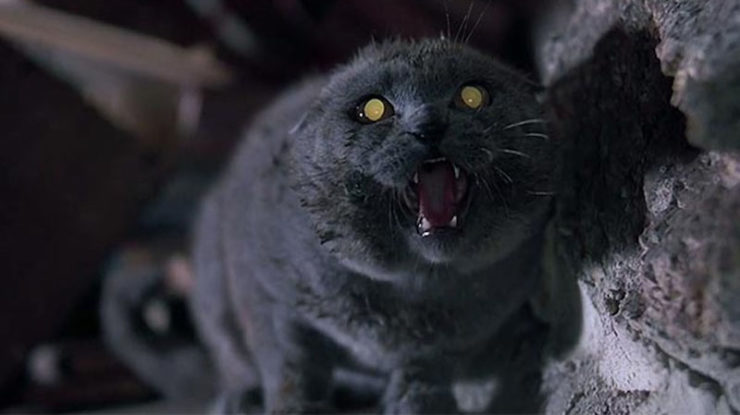
Church is the Creed family cat. He’s on the bottom of this list because, while it’s impressive that he comes back from the dead (after burial in an ancient magical MicMac burial ground, about which the less said the better), he’s not really too cuddly anymore, preferring to rend mice and birds and scatter bits of their corpses around the house. Dying and coming back seems to have really annoyed him, and maybe turned him eeee-villl. Also he smells bad.
And I’m not even going to talk about what happens to the Creed’s baby son, Gage.
13. C.H.O.M.P.S., C.H.O.M.P.S.
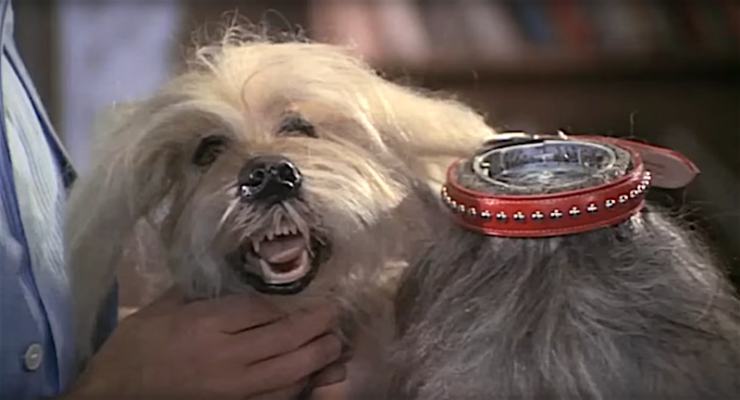
C.H.O.M.P.S. is a late-70s action comedy about a guy who wants to woo a young Valerie Bertinelli, so he… builds a robotic watchdog… to impress her dad… who runs a security company? It’s hard to explain. The film is basically a bunch of labored scenes of the robot dog chasing people while one of his pre-programmed sounds (barking, train whistles, machine gun fire) frightens his victims. Meanwhile, rival security agency-head Jim Backus schemes to steal him away for his own uses. At some point, for some inexplicable reason, C.H.O.M.P.S. is sent to sniff out a bomb. It blows him up, and since he looks like a real dog, everyone is sad and traumatized. But after a few minutes of everyone thinking he’s been damaged beyond repair, his eyes begin to glow, and suddenly he’s alive again, implying that C.H.O.M.P.S. has some sort of consciousness beyond his programming, or a soul, or something? It’s very confusing.
Honestly C.H.O.M.P.S. on this list because I wanted to make sure this movie wasn’t just a dream I had once.
12. Gurgi, The Black Cauldron (Film)
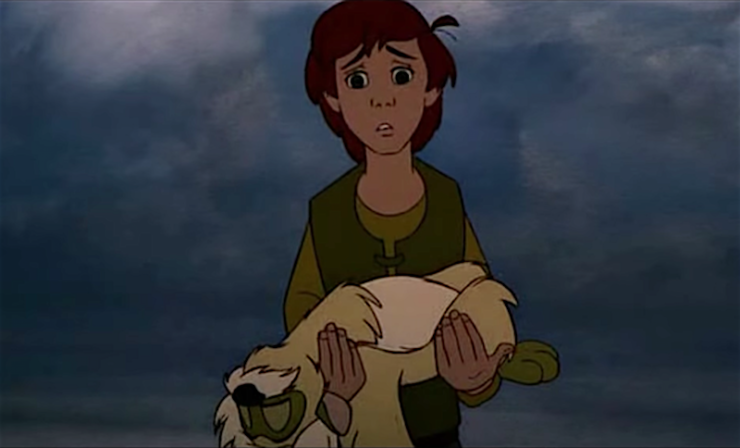
Gurgi doesn’t die in the book. A different character (name redacted for non-spoiler purposes) is the one who leapt into the Black Cauldron—and they stay leaped. But in the movie the sacrifice is handed over to the ridiculous apple crunching and munching comic relief character for maximum Disney pathos. He saves our protagonists and leaps into the Cauldron with the ultimate sign off: “Master has many friends. Gurgi has no friends.” That might have been OK, but clearly the execs decided that they didn’t want to kill him, because when he comes back to life (for no discernible reason) the film stock changes color, which has always made me assume that the post-resurrection scenes were just tacked on after a test screening. There’s no emotional pay-off here because Gurgi is so irritating that you kind of wish he’d stayed dead, and then he forces Taran and Eilonwy to kiss in a moment that’s clearly supposed to be cute and Lady and the Tramp-esque, but just seems smarmy.
11. Superman, Various
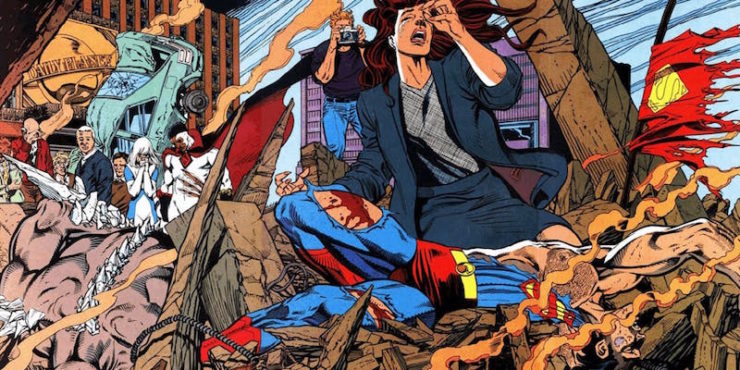
Maybe DC Comics should kill Superman again? The first time was thrilling in that you could argue it was the first truly widescreen breakthrough moment that comic books had within mainstream pop culture. But that’s ALL it was; a gimmick to energize sales of the title. It said little about the character itself, his legacy, or the vacuum left in his absence. The Superman comics themselves resurrected him only 6 months later.
And we were happy to have him back, of course. Supes shouldn’t go down to some punk called Doomsday. But maybe next time Superman dies and is resurrected…lean into it? Less “emerges from goop inside a giant car engine” (this actually happens) and more “he’s a secular representation of Christ dying for our sins and is revived because we as people are worthy after all”? You don’t really have to go down the Christian mythology rabbit hole with Superman, but how humanity changes him and vice versa is an interesting character story that a death/resurrection tale could really bring into focus.
10. Aslan, The Lion, The Witch, and The Wardrobe

When you’re a kid and you read The Lion The Witch and the Wardrobe Aslan coming back seems, well, miraculous. But then you go back to the story when you’re older and the lightbulb goes off and you see why that particular miracle was inevitable. Realizing that Aslan has been Jesus all along it kind of makes the whole coming-back-from-death-thing seem inevitable? It robs it of some of its power.
BUT. Having said that, there’s no denying how powerful it is that the truly dead and bloody and broken lion gets up off the sacrificial rock, shakes death off, and reassures Mary Magdalene and the other Mary Susan and Lucy that he’s really alive now, and everything’s cool.
9. Alex Murphy, RoboCop
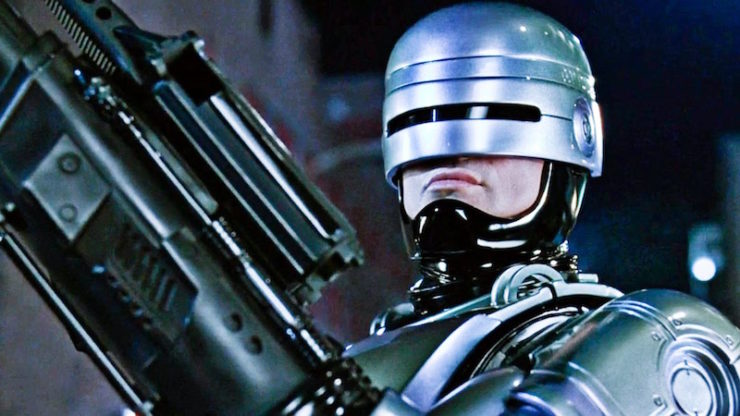
Much like Aslan, the resurrection in RoboCop is really just a thin veneer of genre storytelling over a much older story. (I’m speaking, of course, of Tammuzi, consort of Ishtar). RoboCop ranks slightly higher—first, because the grittier story lends itself to some great social commentary, but more importantly, because the audience truly experiences the death and resurrection of Alex Murphy. We’re in Alex’s POV as he’s murdered and humiliated, and we’re back in his POV when he’s rebooted in his rad new robo-body. And then, we get to experience the real difficulties of resurrection: the part where you have to embark on a new life, continually pestered by horrifying memories of your own murder.
I’ll buy that for a dollar.
8. Sara Lance, Arrow/Legends of Tomorrow
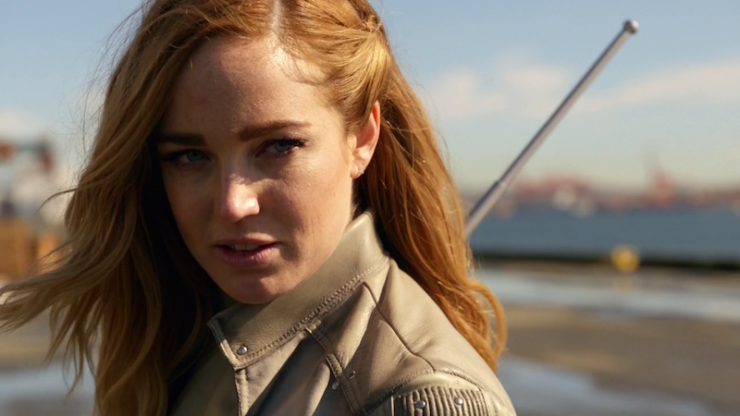
The thing that makes Sara Lance’s resurrection great isn’t the actual resurrection, a sequence featuring Ra’s al Ghul’s very special hot tub (yeah, yeah, it’s called the Lazarus Pit). Nor is it the part after her resurrection, when Sara, missing her soul, goes feral. (This fate awaits Thea Queen, too, eventually, because Arrow has never met a trope it didn’t want to poke at from several angles.) Sure, that gives Oliver a chance to call his old buddy John Constantine, but even Constantine can’t hold a candle to the real bright spot here: the further development of Sara Lance herself. First she was just Laurel’s sister, the girl Ollie secretly took on that fated boat trip; then she was a member of the League of Assassins, a second-string Arrow character whose every appearance was a highlight. But brought back from the dead, she got to evolve into something even better: the smirking, flawed, badass, bisexual captain of the misfit gang of half-broken toys that make up the Legends of Tomorrow. After a shaky first season, Legends embraced its goofiness and doubled down on everyone’s best traits: Ray Palmer’s earnest sensitivity, Mick Rory’s weirdly endearing grumbles, Leonard Snart’s drawling delivery (RIP, Snart-of-Earth-1), and Sara’s reluctant-yet-effective captaincy. She had to come back from the dead—and embrace that death, and wear a lot of goofy outfits—to wind up in this position, and damn, she’s earned it.
7. Ian Malcolm, Jurassic Park and The Lost World
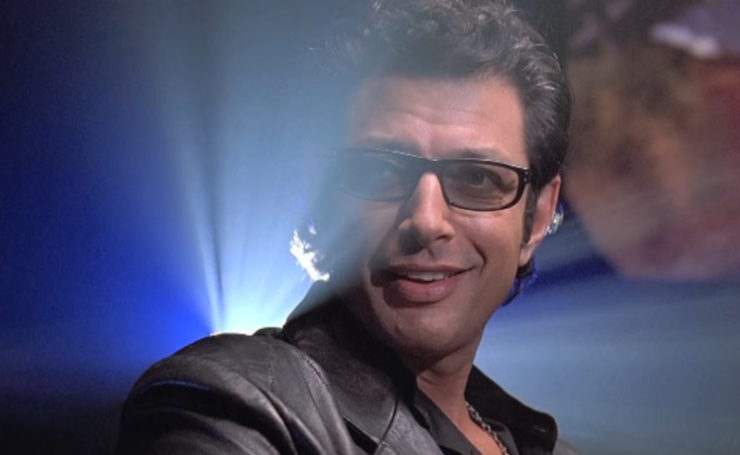
This one’s a reverse Gurgi! Ian Malcolm totally dies in the book. He’s lying there at the Isla Nublar Visitor Center, a big dinosaur bite taken out of him, whacked out of his math-loving gourd on morphine, babbling about paradigm shifts, and he dies.
He is dead, dead, deadski. Everyone is very clear on this.
But then! Steven Spielberg made a film of Jurassic Park, and it was an enormous hit, and Jeff Goldblum Jeff Goldblumed all over the character (becoming a certain generation’s Labyrinth-era David Bowie along the way) and lo! When Michael Crichton came to write The Lost World, suddenly Ian Malcolm was totally fiiiine. All the other characters just thought he was dead, but luckily some other people found him (???) and brought him back to life (????) so the breakout star of the film of the first book could be the star of the second book, and its (underrated, IMO) film adaptation.
“Crichton creates Malcolm, Crichton kills Malcolm. Goldblum kills as Malcolm, Crichton creates Malcolm again.”
6. Gandalf, The Lord of the Rings
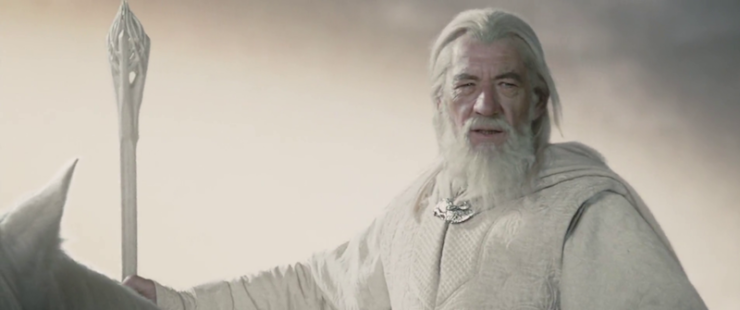
Yes, I know, you think he should be higher. While his return is awesome and inspirational, the Fellowship might have been better off if he’d just stayed alive in the first place, rather than being too arrogant in his dealings with the Balrog. Most of all though, he’s kind of a dick when he comes back? He’s snarky and aloof, and then halfway through the Return of the King he finally reveals that there’s totally an afterlife, but he only tells Pippin, right before a giant battle that none of them expect to survive, but doesn’t bother to tell any of the countless barely-trained citizens going into battle—just Pippin.
Dick move, Gandalf.
5. Morpheus, The Sandman
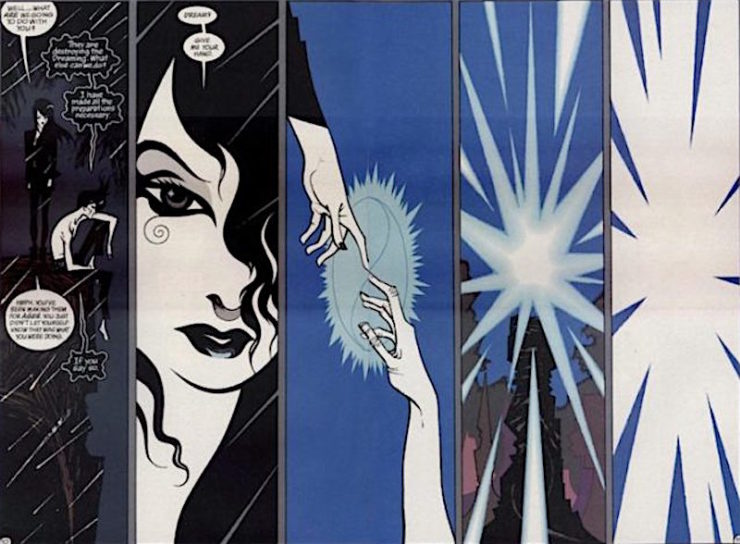
Morpheus’s sacrifice is a fascinating one, because he isn’t really dying for a person, but for a concept. He realizes that he can’t change fast enough to remain a relevant Lord of All Dreaming; he’s too austere, too hung up on rules. Plus, after eons of service, he’s simply tired. So he allows the Kindly Ones to pursue him, he gives up fighting them, and then he calls upon his big sister. Even after the issues and issues of buildup, Morpheus’ death is shocking; personally it may be the first time I encountered a work of fiction where the old writing advice of “make your ending both inevitable and surprising” idea clicked into place: of course Morpheus has to die, but of course I didn’t expect him to go through with it. The death is real, the Endless mourn, they hold a wake, and all of humanity is shaken knowing that there’s been a disturbance in the natural order.
And then sweet, lovely Daniel appears to take on his new role, and life rolls on.
4. Buffy, Buffy the Vampire Slayer
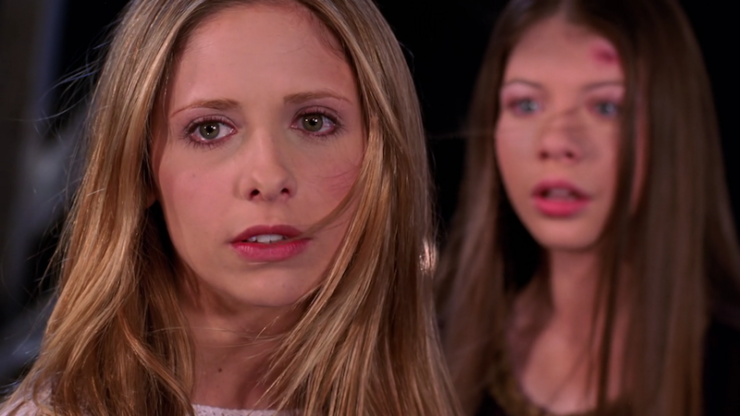
Buffy saved the world a lot, and she also died multiple times. In season one’s “Prophecy Girl,” the show pulls the rug out from under us when the Master successfully drown her and leaves her dead. It’s a harsh, terrifying moment in a show that wasn’t exactly a lighthearted romp. But then Xander and Angel find her soon enough, and Xander’s able to CPR her back to life. But that’s only a practice death. The Real Thing comes in season five’s “The Gift.” Buffy chooses to leap into an inter-dimensional Hell portal, knowing that only the blood of a Summers girl will close it—and knowing that if she doesn’t jump, her sister Dawn is doomed. The rest of the Scoobies assume that she’s trapped in a Hell dimension, and spend months working on a spell to bring her back to life. Unfortunately, when she does come back, it turns out she’s been in Heaven the whole time, and not even life in California quite measure up to that.
Buffy gets extra points here for: choosing to take her sister’s place, dealing with the genuine existential crisis that comes after death and resurrection, working through that crisis in some remarkably censor-baiting scenes with Spike, and ultimately choosing to be alive at the end of about two seasons of mourning for herself.
We’ve got a two-way tie for second place here:
3. The Doctor, Doctor Who
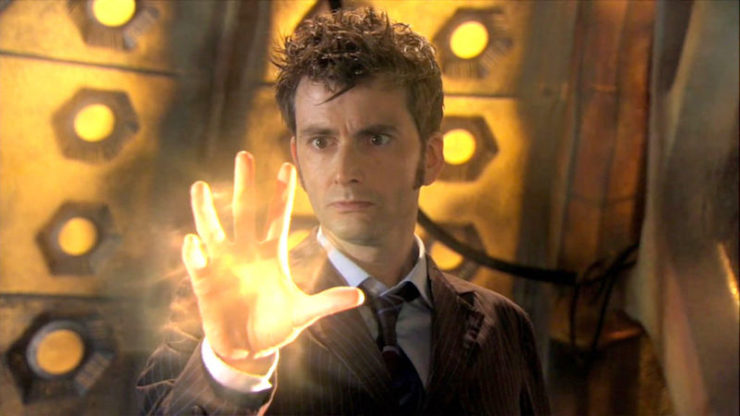
The best thing about the Doctor’s resurrection is that death always means a brand new chance at life. The viewer isn’t supposed to worry much over the Doctor leaving us because the Doctor is never really gone—just revived and renewed and reclaimed by another face. And while it’s always jarring to be faced with that brand new person, it’s also like getting a chance to fall in love again; we are reminded of why we love the character so much, and get to appreciate them anew by seeing another actor put their spin on the part.
But regenerations are always fraught with emotion because the Doctor doesn’t live like a normal Time Lord—often these changes are the result of doing something terribly heroic, and then there’s a dramatic speech and sometimes there are companions standing around crying, and the whole thing is very hard to sit quietly through. The point is, all Doctor Who fans are secretly sadists, because it’s just cruel to do this to yourself every few years.
2. Spock, Star Trek III: The Search for Spock

Spock’s death is one of the most affecting in science fiction’s history, and literally no one is allowed to refute this because it is scientifically proved and impossible to renounce. There. It is declared. There are graphs and charts and academic papers backing this up. Spock and Kirk separated by a radiation chamber and having their last conversation is traumatizing, and no one is ever over it, so accept this and do not try to pretend that you’re over it. You don’t have to be over it. You are (ostensibly, if you are reading this) only human.
That being said, if Spock hadn’t been returned to his friends in the next film, this tragedy would have become unbearable. Whatever your feelings on Star Trek III, its endgame cannot be denied because when all is said and done, Spock is standing there in desperate need of a haircut, and he’s fairly sure that he knows this guy in front of him because “…Jim. Your name is Jim.”
*muffled sobs issue from the corner*
1. Iron Giant, The Iron Giant
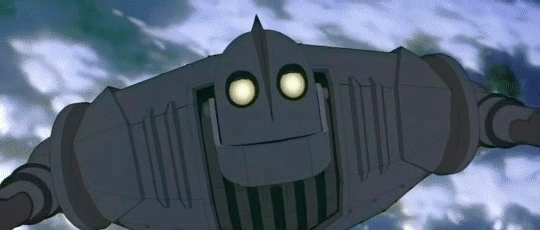
The Iron Giant goes out sacrificing himself for Hogarth and the rest of humanity. This moment is one of the most heartrending scenes in all of children’s film. But after a warm ending sequence where we learn that Hogarth has finally made some friends, and his mom and Dean have fallen in love, we check back in with one of the Giant’s rivets as it rolls through forests, down a beach and into the sea. We sweep up over the ocean and into the Arctic, where we see the Giant’s antenna sending out a homing beacon for all of his scattered parts. It may take a while, but Superman is going to return.
Ugh I’m crying AGAIN FFS
[Clears throat, blows nose.] Anyway, what are your favorite SFF resurrections? Tell us all about them in the comments!










